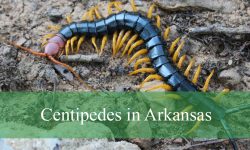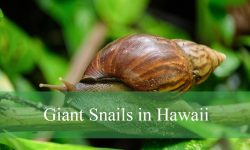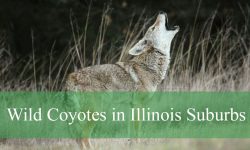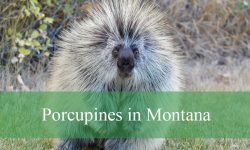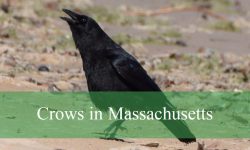Deep in the heart of Texas, where sprawling ranches meet winding rivers and mesquite thickets, a stealthy and destructive invader roams the land—the wild hog (Sus scrofa). These muscular, intelligent, and surprisingly fast animals have become one of the most infamous residents of the Lone Star State.
While many people picture Texas as the land of longhorns and cowboys, few realize that wild hogs outnumber almost every other large mammal in the region. With an estimated population exceeding 2.5 million, Texas is now home to the largest wild hog population in the United States.
But how did these creatures become such a dominant force? What makes them so hard to control, and what surprising traits help them thrive? In this article, we’ll explore interesting facts about wild hogs in Texas you didn’t know—their origins, behavior, intelligence, impact on the ecosystem, and the ongoing struggle to manage their numbers.
The Origin of Texas’ Wild Hogs
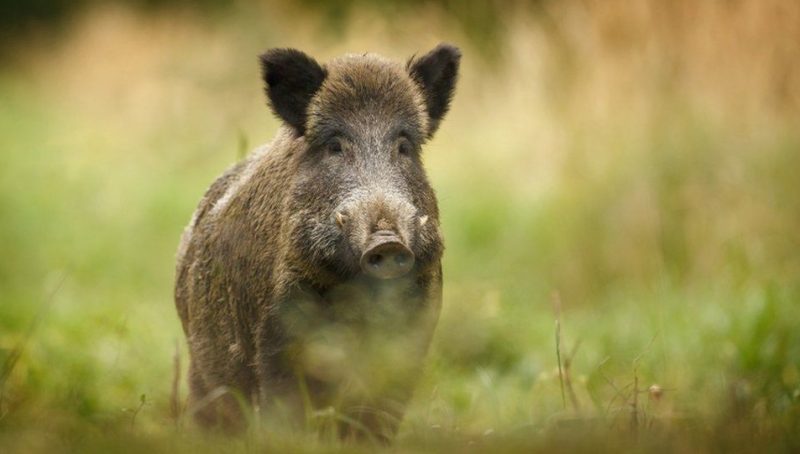
From Settlers to Invaders
The story of wild hogs in Texas begins hundreds of years ago. The first pigs were brought to North America by Spanish explorers in the 1500s, who released them into the wild as a source of food. Over time, these domestic pigs interbred with Eurasian wild boars imported later for hunting, creating the feral hybrids that now dominate Texas landscapes.
These animals combined the size of domestic pigs with the agility and toughness of wild boars, producing a species that could survive nearly anywhere—from the pine forests of East Texas to the arid plains of the west.
Population Explosion
With no natural predators and abundant food sources, wild hog populations grew exponentially. A single sow can produce two litters per year, each with up to 12 piglets. This rapid reproduction means that populations can double in less than a year if left unchecked.
Today, wild hogs are found in nearly every county in Texas, causing billions of dollars in agricultural damage annually.
Physical Characteristics
Powerful and Adaptable
Adult wild hogs typically weigh 150 to 300 pounds, though some can exceed 500 pounds. Their bodies are built for survival—muscular shoulders, sharp tusks, and thick hides make them formidable adversaries.
Their coarse bristly coats range from black and brown to red or gray, with hybrids displaying a mix of colors. Boars (males) often have longer tusks than sows (females), which they use for digging and defense.
Keen Senses
Wild hogs may not see well, but they compensate with extraordinary hearing and smell. Their sense of smell is so acute that they can detect food or danger from several hundred yards away. This ability makes them skilled foragers and nearly impossible to surprise.
Habitat and Distribution in Texas
Everywhere from Forests to Suburbs
Wild hogs are astonishingly adaptable. They thrive in nearly every environment Texas has to offer, including:
- Piney woods of East Texas
- Hill Country oak forests
- Coastal plains and marshes
- Agricultural lands in Central and South Texas
- Even urban and suburban areas near San Antonio, Austin, and Houston
As omnivores, they take advantage of whatever food is available—roots, crops, carrion, insects, and small animals. This adaptability allows them to move seamlessly between wilderness and farmland, and even into neighborhoods searching for garbage or pet food.
Migration and Movement
Wild hogs are constantly on the move, often traveling up to 15 miles per night in search of food and water. Their home ranges expand during droughts or hunting pressure, and GPS tracking studies have shown that they can cover vast areas in surprisingly little time.
Behavior and Intelligence
Smarter Than You Think
One of the most surprising facts about wild hogs is their remarkable intelligence. They are among the smartest non-primate mammals, capable of remembering food sources, avoiding traps, and learning from past experiences.
When hunting or trapping becomes frequent in an area, hogs quickly adapt—changing feeding patterns, becoming nocturnal, and avoiding human scent. This intelligence makes long-term control extremely challenging.
Social Animals
Wild hogs live in family groups called sounders, usually consisting of females and their young. Adult males are more solitary, joining groups only during the breeding season. Sounders communicate through a variety of vocalizations—grunts, squeals, and growls—and cooperate when foraging or protecting piglets.
Aggression and Defense
While generally shy, wild hogs can be dangerous when cornered or provoked. Their sharp tusks can inflict serious injuries on both animals and humans. Boars, in particular, are known to charge when threatened, especially during the rutting season.
The Ecological Impact of Wild Hogs in Texas
Agricultural Devastation
Wild hogs cause an estimated $500 million in damages annually in Texas. They root up crops, destroy irrigation systems, and damage pasturelands. Their feeding habits—digging up soil with their snouts—also lead to erosion and loss of vegetation.
Crops most affected include:
- Corn
- Sorghum
- Peanuts
- Rice
- Pasture grasses
Their rooting can devastate an entire field overnight, leaving behind deep holes and muddy trenches.
Threats to Wildlife
Wild hogs don’t just harm crops—they also pose a serious threat to native wildlife. They compete with deer and turkeys for food, destroy bird nests, and even eat small reptiles, amphibians, and fawns. Their rooting disrupts ground-nesting birds like quail, leading to declining populations in some areas.
Water Contamination
Their wallowing behavior—rolling in mud to cool off—can pollute ponds and streams with bacteria and parasites. Studies have linked hog populations to contamination of Texas waterways with E. coli and other pathogens.
Wild Hogs and Human Conflict
Urban Encounters
As Texas continues to urbanize, wild hogs are increasingly seen in suburban neighborhoods. They dig up lawns, raid gardens, and damage golf courses. In some areas, they even roam near schools or parks after dark.
There have been rare but notable cases of hogs injuring people, particularly when surprised or defending young. Most encounters, however, involve property damage rather than physical harm.
Vehicle Collisions
With millions of hogs roaming rural highways, collisions are becoming more frequent. A wild hog weighing 250 pounds can cause significant damage to vehicles and pose serious risks to drivers, especially at night.
Control and Management in Texas
Hunting and Trapping
Texas law classifies wild hogs as nuisance animals, meaning they can be hunted year-round with no bag limits. Landowners and licensed hunters use rifles, traps, and even helicopters to reduce populations.
Aerial hunting, or “heli-hogging,” has become popular in rural Texas, allowing hunters to target large groups across vast areas. However, despite thousands of hogs being removed each year, populations continue to grow due to their high reproductive rate.
Trapping Techniques
Trapping remains one of the most effective control methods. Modern traps use remote-controlled gates and cellular alerts, allowing ranchers to capture entire sounders at once. Traditional single-hog traps are less effective, as surviving members quickly learn to avoid them.
The Role of Poison Bait
Scientists have experimented with poisons such as warfarin-based baits, but environmental concerns and risks to non-target species have limited their widespread use. Texas officials continue to study safer chemical control methods, but none are currently approved for general use.
Wild Hog Hunting Culture in Texas
A Texan Tradition
In many rural parts of Texas, wild hog hunting has evolved from necessity into a tradition. Hunters use dogs, night-vision scopes, and specialized rifles to track and harvest hogs.
Wild hog meat is edible and often praised for its flavor when prepared properly. However, hunters must take precautions since hogs can carry diseases like brucellosis and trichinosis. Proper cooking eliminates these risks.
Economic Impact
Wild hog hunting has created a thriving industry in Texas. Guided hunts, helicopter tours, and processing services contribute millions of dollars annually to local economies. For many, it’s both a sport and a vital part of land management.
Diseases and Health Concerns
Wild hogs are carriers of over 30 diseases and parasites, some of which can affect humans and livestock. The most concerning include:
- Brucellosis – causes fever and fatigue in humans if contracted through blood contact.
- Leptospirosis – spread through contaminated water.
- Pseudorabies – fatal to dogs and livestock but not humans.
- Toxoplasmosis – a parasitic disease dangerous to pregnant women.
Farmers and hunters are urged to wear gloves when handling carcasses and to sanitize tools and surfaces thoroughly.
Myths and Misconceptions
Myth |
Truth |
|---|---|
Wild hogs are slow. |
False. They can run up to 30 mph and swim across rivers. |
They only live in rural areas. |
False. They are now common in suburbs and city outskirts. |
Hogs can’t climb. |
Partly false. They can’t climb trees, but they can jump fences under 3 feet tall. |
Killing them will eliminate the problem. |
False. Populations rebound quickly without ongoing control. |
Wild hog meat is unsafe. |
False. It’s safe to eat when cooked thoroughly. |
Interesting and Lesser-Known Facts About Texas Wild Hogs
- They have no natural predators in Texas, allowing populations to grow unchecked.
- Wild hogs can swim for miles, often crossing rivers and lakes to reach new territories.
- Their tusks grow continuously, used for digging and defense.
- They can detect underground roots and insects using smell alone.
- Feral hog DNA is nearly identical to domestic pigs, which means they can interbreed easily.
- They are omnivorous scavengers, occasionally eating carcasses or even small livestock.
- Each year, Texas hunters remove over 700,000 hogs, yet the population remains stable.
FAQs About Wild Hogs in Texas
Are wild hogs dangerous to people?
They usually avoid humans but can be aggressive if cornered, especially females with young.
How fast can they reproduce?
A sow can give birth twice a year, producing 4–12 piglets per litter.
Do wild hogs help the environment in any way?
Not really. Their destructive rooting behavior causes more harm than benefit.
Can you eat wild hog meat?
Yes, but it must be fully cooked to eliminate parasites.
What’s the best way to control wild hogs?
A combination of hunting, trapping, and habitat management yields the best results.
Conclusion
The wild hogs of Texas are both a marvel of adaptability and a menace to the landscape. Their intelligence, strength, and reproductive power make them one of the most challenging invasive species in the country.
From farmland destruction to suburban encounters, these animals have reshaped how Texans interact with their environment. Yet, amid the chaos, they’ve also become part of the state’s unique identity—a symbol of both resilience and the wild untamed spirit of Texas itself.
As scientists and landowners continue the battle to manage their numbers, one truth remains clear: you can’t underestimate the wild hog. Whether admired for their cunning or feared for their destruction, they are here to stay—and they’ll keep reminding Texans that nature, no matter how controlled, always finds a way to fight back.

